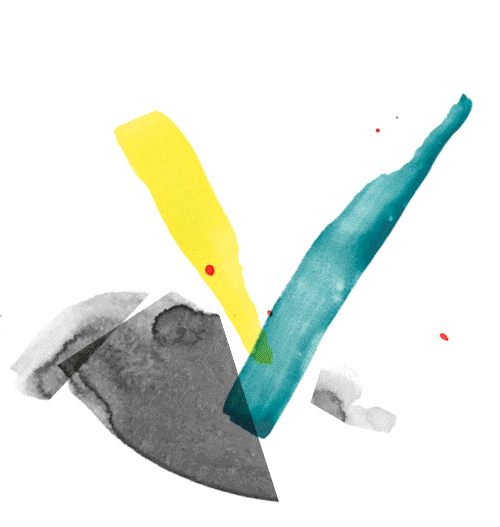

Sign up for our newsletters. You can change the settings or unsubscribe at any time.
Thank you for your subscription. We have sent you an e-mail with a confirmation link.


exp. 1
exp. 2
exp. 3

Virginia Borges, Gil DuOdé, and Virginia de Medeiros
Venue: KW Institute for Contemporary Art
Virginia Borges, Gil DuOdé, and Virginia de Medeiros
Virginia Borges, born 1980 in São Paulo, BR – lives and works in Berlin, DE
Gil DuOdé, born 1986 in Belo Horizonte, BR – lives and works in Berlin
Virginia de Medeiros, born 1973 in Feira de Santana, BR – lives and works in São Paulo
Trem em Transe [Train in Trance, 2019], exhibited at exp. 2, begins aboard a train, whose journey forks onto the divergent tracks of the spiritual and the mundane. The camera zooms in on a young Black man preaching his gospel of salvation. He was desperate, despondent, and homeless, but now wears a wristwatch and a suit, by the grace of God. Praise the Lord. Sola fide, the doctrine of redemption by faith alone, helped distinguish Lutheran theology from the Catholic Church. But the way Protestant denominations have intensely labored to sever the spiritual from the somatic is hard to square with how this young preacher and his Pentecostal minister act as psychic conduits, channeling Jesus. Others, mostly women, soon join their trance-like state. The train might be heading to Paripe, but its passengers are traveling elsewhere. Able to undo the inwardness of the contemplative self, trance could be described as a social technology. As they reach their destination a bystander asks, “Was this Candomblé?”
Before arriving in Berlin, Virginia de Medeiros set up a constellation to visualize a hidden dynamic. The result yielded three words: africa, territory, and healing. A screening at Forum Brasil led the artist to Ilê Obá Sileké, the sole Candomblé temple of Germany, which welcomed her as abian, the novice “who undertakes a new journey.” Ìyá Agbára [Strength of Mothers, 2020], the film produced for the 11th Berlin Biennale, revolves around the portraits of eight female affiliates of the Ilê Obá Sileké. The work emerged from collective exercises with the temple community, in particular with Virginia Borges and Gil DuOdé, who share authorship with de Medeiros. Shot in 16mm, Ìyá Agbára expands the indexicality of film to include somatic and spiritual registers. White eschatology preaches the gospel of individuated autonomy; Borges, DuOdé, and de Medeiros work in the opposite direction.
Ana Teixeira Pinto
By using this website you agree to the use of cookies in accordance with our data privacy policy.

Virginia Borges, Gil DuOdé, and Virginia de Medeiros
Venue: KW Institute for Contemporary Art
Virginia Borges, Gil DuOdé, and Virginia de Medeiros
Virginia Borges, born 1980 in São Paulo, BR – lives and works in Berlin, DE
Gil DuOdé, born 1986 in Belo Horizonte, BR – lives and works in Berlin
Virginia de Medeiros, born 1973 in Feira de Santana, BR – lives and works in São Paulo
Trem em Transe [Train in Trance, 2019], exhibited at exp. 2, begins aboard a train, whose journey forks onto the divergent tracks of the spiritual and the mundane. The camera zooms in on a young Black man preaching his gospel of salvation. He was desperate, despondent, and homeless, but now wears a wristwatch and a suit, by the grace of God. Praise the Lord. Sola fide, the doctrine of redemption by faith alone, helped distinguish Lutheran theology from the Catholic Church. But the way Protestant denominations have intensely labored to sever the spiritual from the somatic is hard to square with how this young preacher and his Pentecostal minister act as psychic conduits, channeling Jesus. Others, mostly women, soon join their trance-like state. The train might be heading to Paripe, but its passengers are traveling elsewhere. Able to undo the inwardness of the contemplative self, trance could be described as a social technology. As they reach their destination a bystander asks, “Was this Candomblé?”
Before arriving in Berlin, Virginia de Medeiros set up a constellation to visualize a hidden dynamic. The result yielded three words: africa, territory, and healing. A screening at Forum Brasil led the artist to Ilê Obá Sileké, the sole Candomblé temple of Germany, which welcomed her as abian, the novice “who undertakes a new journey.” Ìyá Agbára [Strength of Mothers, 2020], the film produced for the 11th Berlin Biennale, revolves around the portraits of eight female affiliates of the Ilê Obá Sileké. The work emerged from collective exercises with the temple community, in particular with Virginia Borges and Gil DuOdé, who share authorship with de Medeiros. Shot in 16mm, Ìyá Agbára expands the indexicality of film to include somatic and spiritual registers. White eschatology preaches the gospel of individuated autonomy; Borges, DuOdé, and de Medeiros work in the opposite direction.
Ana Teixeira Pinto
Memorial to the Sinti and Roma Victims of National Socialism
Dani Karavan
Memorial
III: La familia son quiénes se alegran con nuestros actos diarios. Detrás de las curadoras de la XI
María Berríos, Agustín Pérez Rubio
Conversation
Undocumented Rumours and Disappearing Acts from Chile
María Berríos
Essay
Solidarity and Storytelling. Rumors against Enclosure
María Berríos
Essay
„Klaus Eckschen: Hörspiel“
Die Remise
Hörspiel
Hatred Among Us
Lisette Lagnado
Essay
By using this website you agree to the use of cookies in accordance with our data privacy policy.

Virginia Borges, Gil DuOdé, and Virginia de Medeiros
Venue: KW Institute for Contemporary Art
Virginia Borges, Gil DuOdé, and Virginia de Medeiros
Virginia Borges, born 1980 in São Paulo, BR – lives and works in Berlin, DE
Gil DuOdé, born 1986 in Belo Horizonte, BR – lives and works in Berlin
Virginia de Medeiros, born 1973 in Feira de Santana, BR – lives and works in São Paulo
Trem em Transe [Train in Trance, 2019], exhibited at exp. 2, begins aboard a train, whose journey forks onto the divergent tracks of the spiritual and the mundane. The camera zooms in on a young Black man preaching his gospel of salvation. He was desperate, despondent, and homeless, but now wears a wristwatch and a suit, by the grace of God. Praise the Lord. Sola fide, the doctrine of redemption by faith alone, helped distinguish Lutheran theology from the Catholic Church. But the way Protestant denominations have intensely labored to sever the spiritual from the somatic is hard to square with how this young preacher and his Pentecostal minister act as psychic conduits, channeling Jesus. Others, mostly women, soon join their trance-like state. The train might be heading to Paripe, but its passengers are traveling elsewhere. Able to undo the inwardness of the contemplative self, trance could be described as a social technology. As they reach their destination a bystander asks, “Was this Candomblé?”
Before arriving in Berlin, Virginia de Medeiros set up a constellation to visualize a hidden dynamic. The result yielded three words: africa, territory, and healing. A screening at Forum Brasil led the artist to Ilê Obá Sileké, the sole Candomblé temple of Germany, which welcomed her as abian, the novice “who undertakes a new journey.” Ìyá Agbára [Strength of Mothers, 2020], the film produced for the 11th Berlin Biennale, revolves around the portraits of eight female affiliates of the Ilê Obá Sileké. The work emerged from collective exercises with the temple community, in particular with Virginia Borges and Gil DuOdé, who share authorship with de Medeiros. Shot in 16mm, Ìyá Agbára expands the indexicality of film to include somatic and spiritual registers. White eschatology preaches the gospel of individuated autonomy; Borges, DuOdé, and de Medeiros work in the opposite direction.
Ana Teixeira Pinto
Maternidades subversivas
María Llopis
Monograph
II: La Solidaridad va Más Allá de un Concepto. Entre las Curadoras de la XI Berlin Biennale
Lisette Lagnado, Agustín Pérez Rubio
Conversation
III: La familia son quiénes se alegran con nuestros actos diarios. Detrás de las curadoras de la XI
María Berríos, Agustín Pérez Rubio
Conversation
Fragments of the Artist’s Diary, Berlin 11.2019–1.2020
Virginia de Medeiros
Diary
Teatro da Vertigem
Monograph
THE MOBILIZATION
Nicolás Cuello
Text
By using this website you agree to the use of cookies in accordance with our data privacy policy.

Virginia Borges, Gil DuOdé, and Virginia de Medeiros
Venue: KW Institute for Contemporary Art
Virginia Borges, Gil DuOdé, and Virginia de Medeiros
Virginia Borges, born 1980 in São Paulo, BR – lives and works in Berlin, DE
Gil DuOdé, born 1986 in Belo Horizonte, BR – lives and works in Berlin
Virginia de Medeiros, born 1973 in Feira de Santana, BR – lives and works in São Paulo
Trem em Transe [Train in Trance, 2019], exhibited at exp. 2, begins aboard a train, whose journey forks onto the divergent tracks of the spiritual and the mundane. The camera zooms in on a young Black man preaching his gospel of salvation. He was desperate, despondent, and homeless, but now wears a wristwatch and a suit, by the grace of God. Praise the Lord. Sola fide, the doctrine of redemption by faith alone, helped distinguish Lutheran theology from the Catholic Church. But the way Protestant denominations have intensely labored to sever the spiritual from the somatic is hard to square with how this young preacher and his Pentecostal minister act as psychic conduits, channeling Jesus. Others, mostly women, soon join their trance-like state. The train might be heading to Paripe, but its passengers are traveling elsewhere. Able to undo the inwardness of the contemplative self, trance could be described as a social technology. As they reach their destination a bystander asks, “Was this Candomblé?”
Before arriving in Berlin, Virginia de Medeiros set up a constellation to visualize a hidden dynamic. The result yielded three words: africa, territory, and healing. A screening at Forum Brasil led the artist to Ilê Obá Sileké, the sole Candomblé temple of Germany, which welcomed her as abian, the novice “who undertakes a new journey.” Ìyá Agbára [Strength of Mothers, 2020], the film produced for the 11th Berlin Biennale, revolves around the portraits of eight female affiliates of the Ilê Obá Sileké. The work emerged from collective exercises with the temple community, in particular with Virginia Borges and Gil DuOdé, who share authorship with de Medeiros. Shot in 16mm, Ìyá Agbára expands the indexicality of film to include somatic and spiritual registers. White eschatology preaches the gospel of individuated autonomy; Borges, DuOdé, and de Medeiros work in the opposite direction.
Ana Teixeira Pinto
Feminist Health Care Research Group
Web archive
Glossary of Common Knowledge
L’Internationale Online
Glossary
Fragments of the Artist’s Diary, Berlin 11.2019–1.2020
Virginia de Medeiros
Diary
Struggle as Culture: The Museum of Solidarity, 1971–73
María Berríos
Essay
I: Junto a las curadoras de la XI Berlin Biennale for Contemporary Art
Renata Cervetto, Lisette Lagnado
Conversation
Queer Ancient Ways: A Decolonial Exploration
Zairong Xiang
Monograph
By using this website you agree to the use of cookies in accordance with our data privacy policy.
By using this website you agree to the use of cookies in accordance with our data privacy policy.




